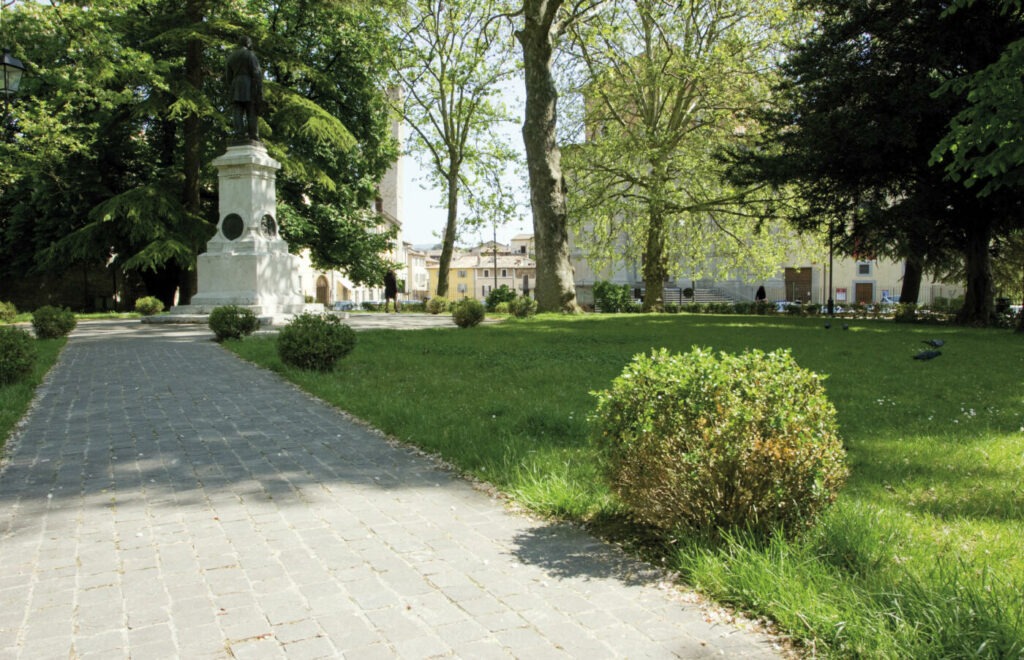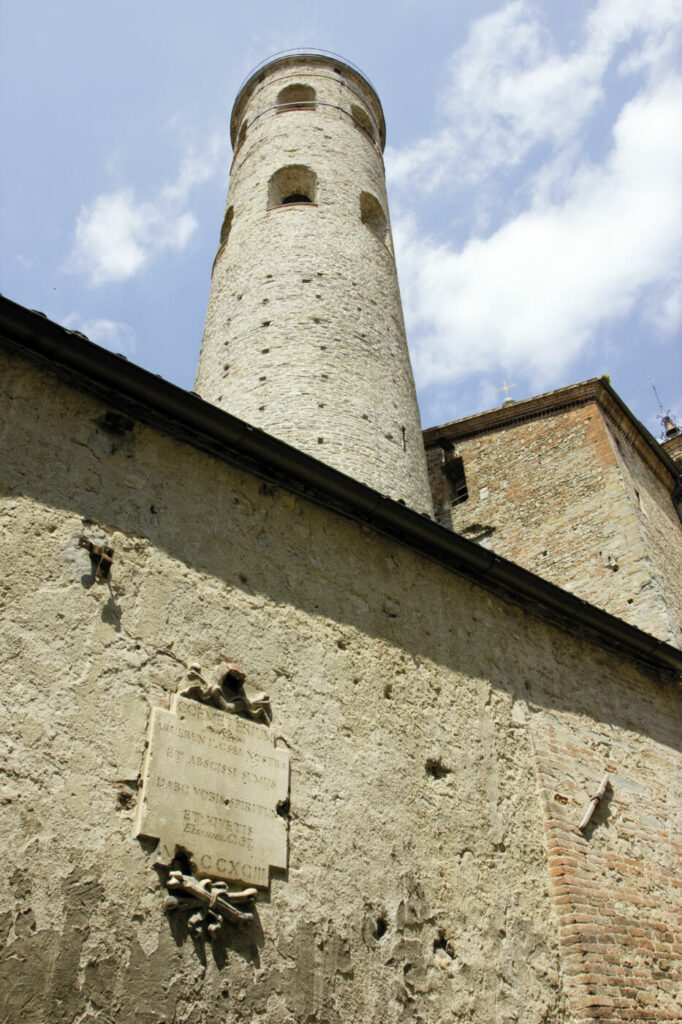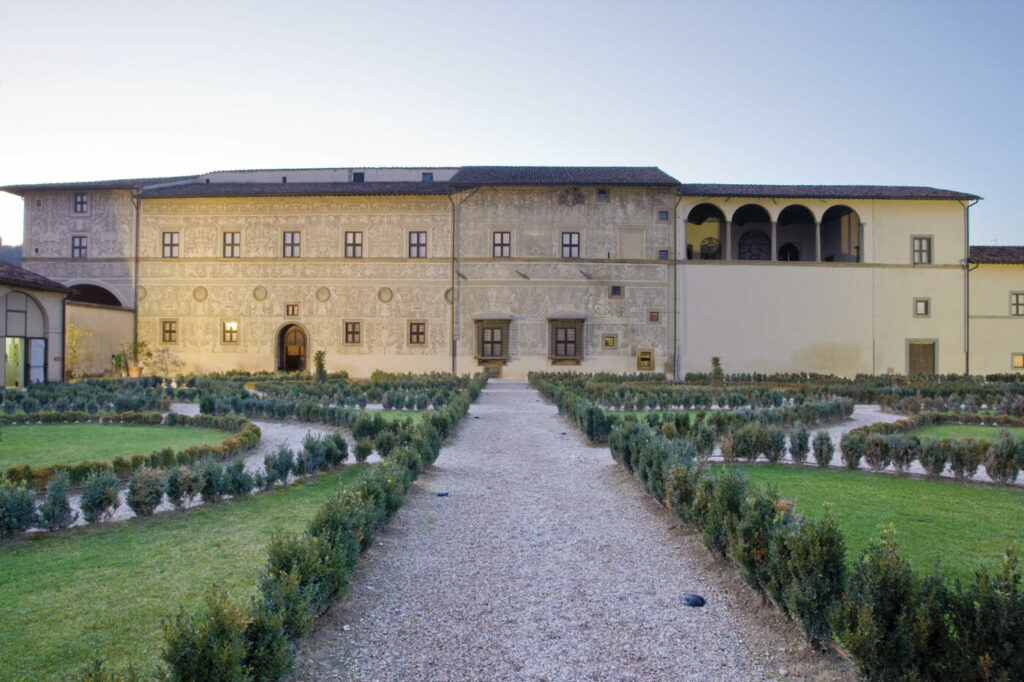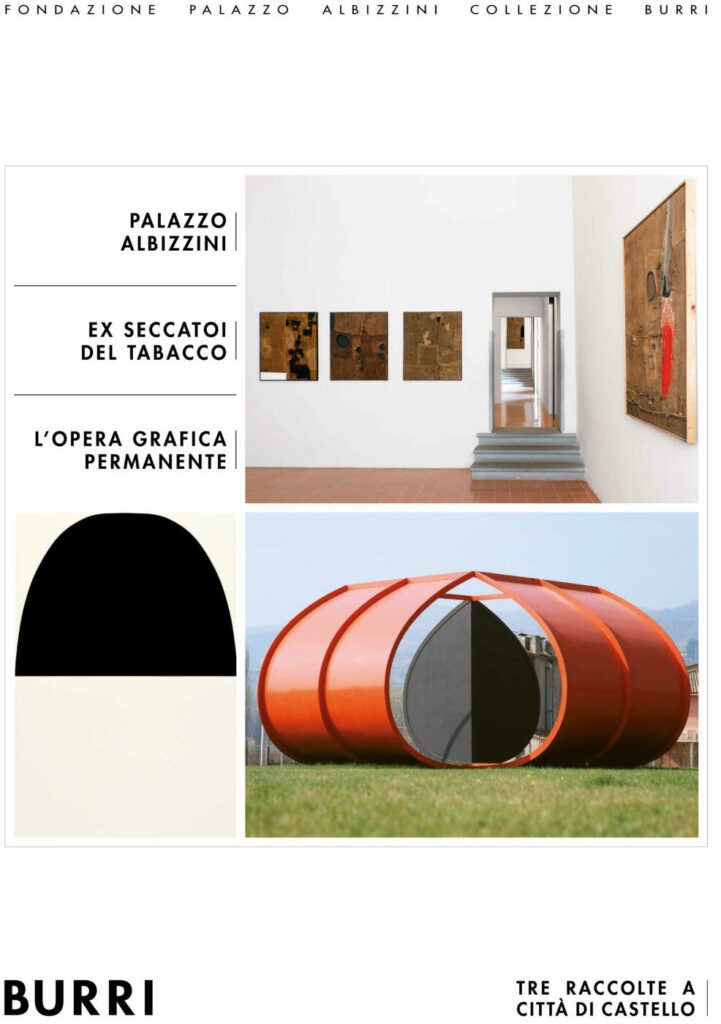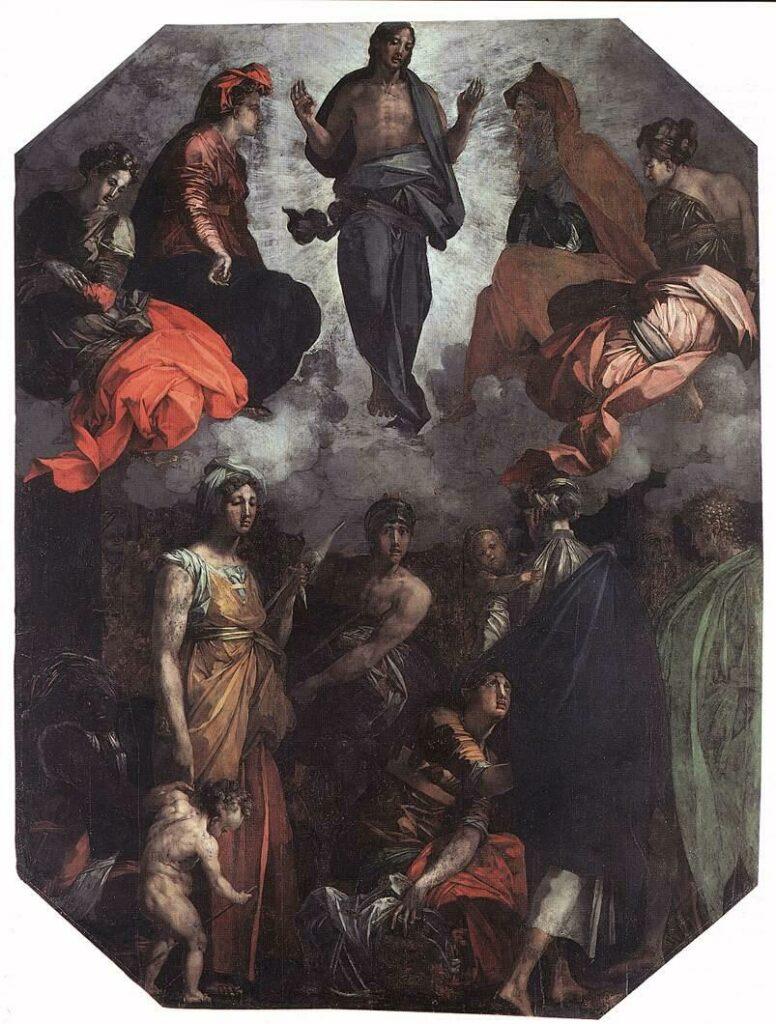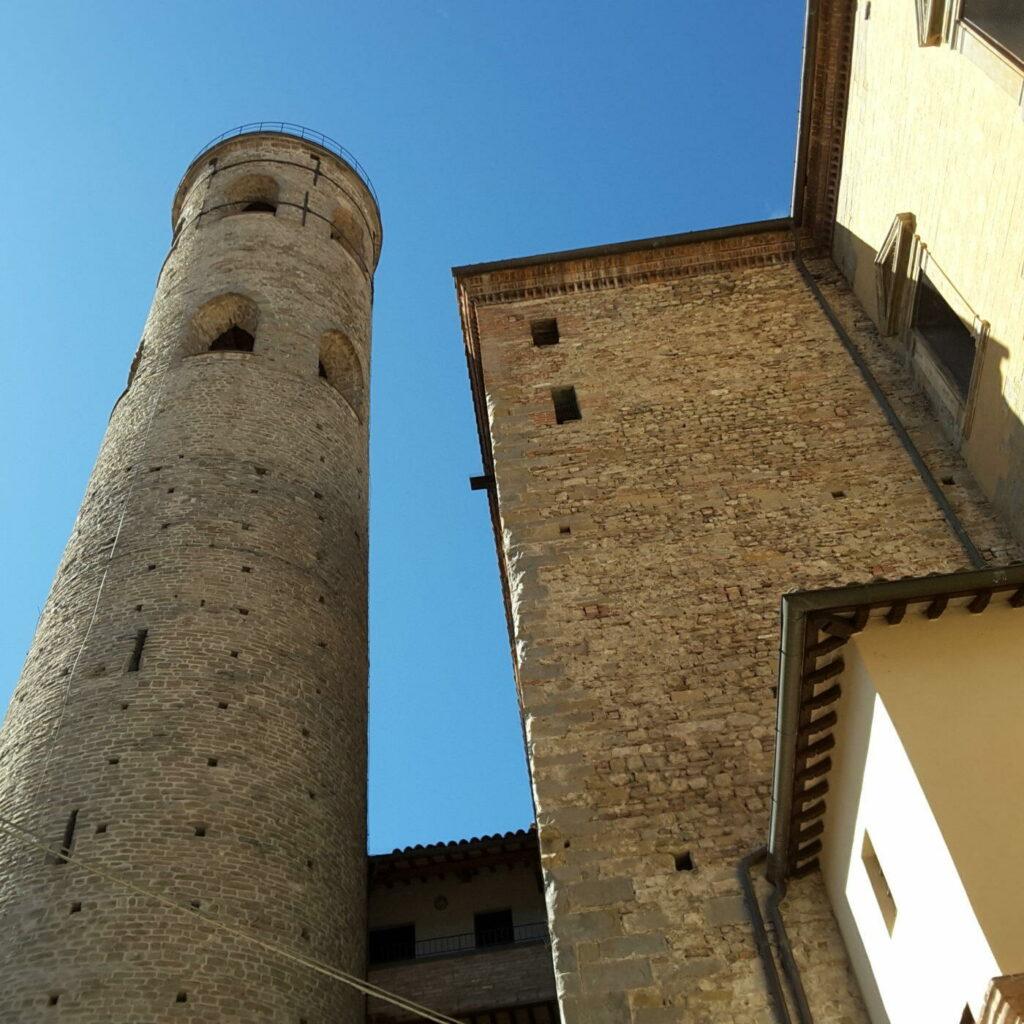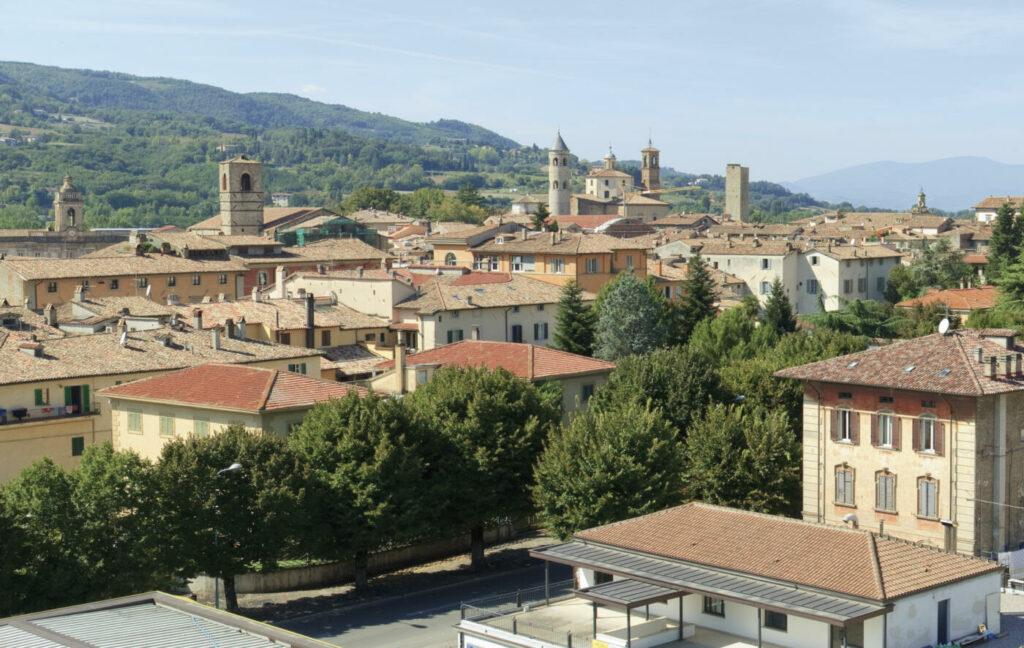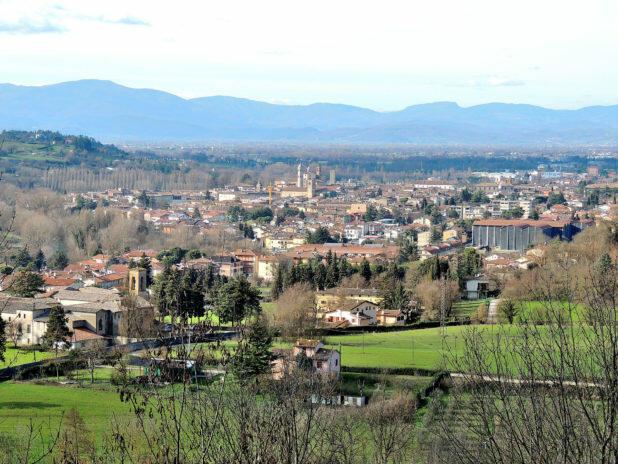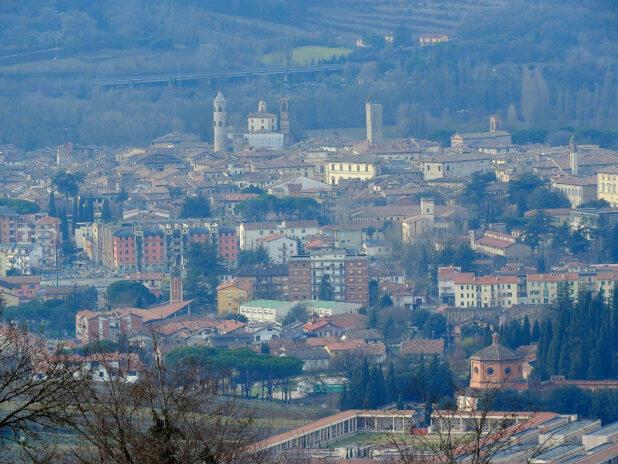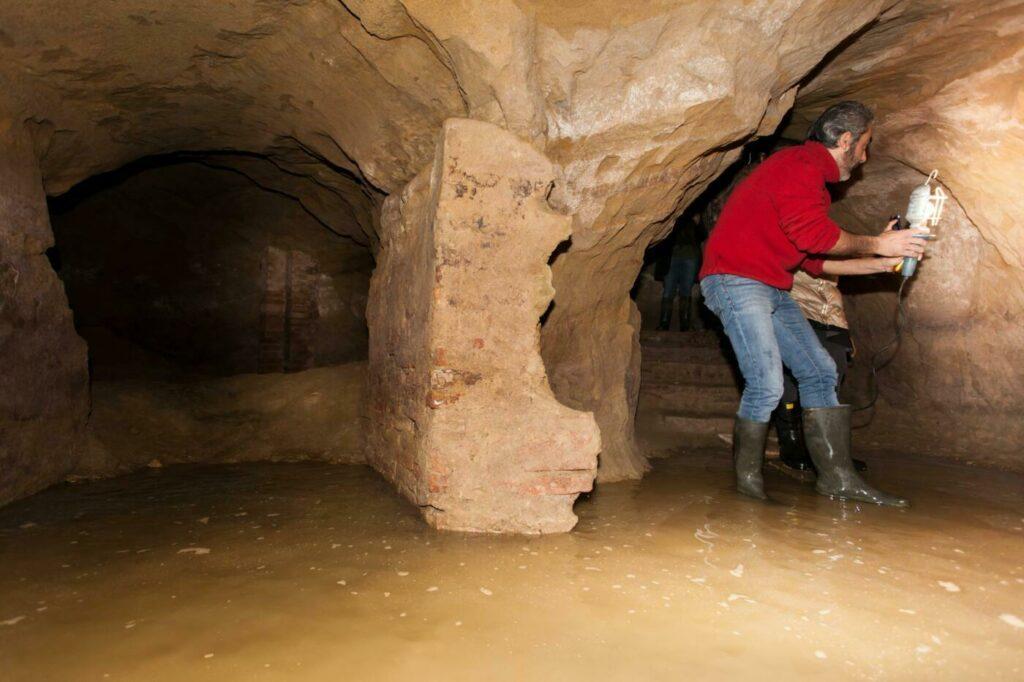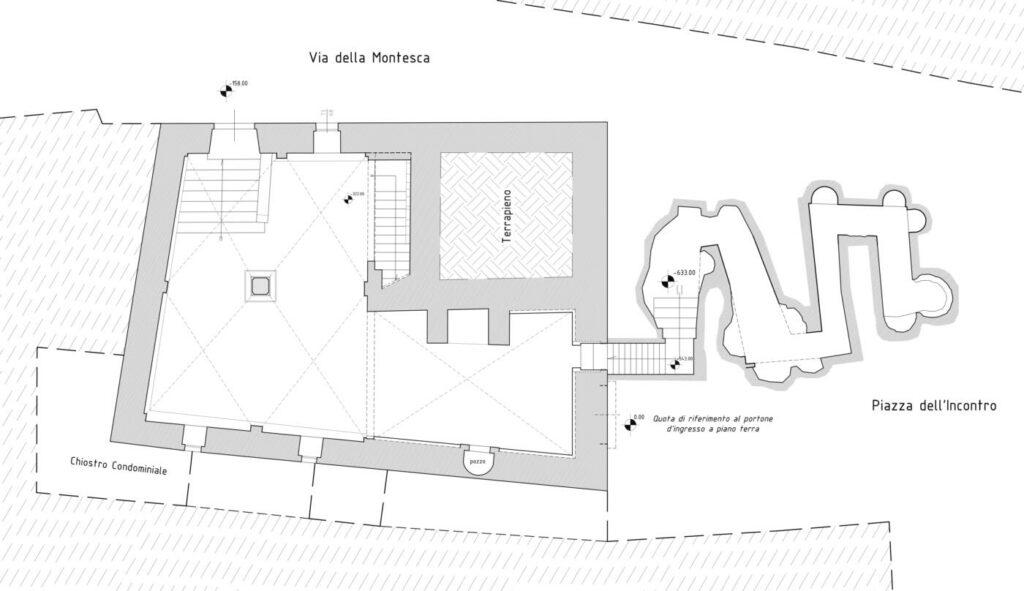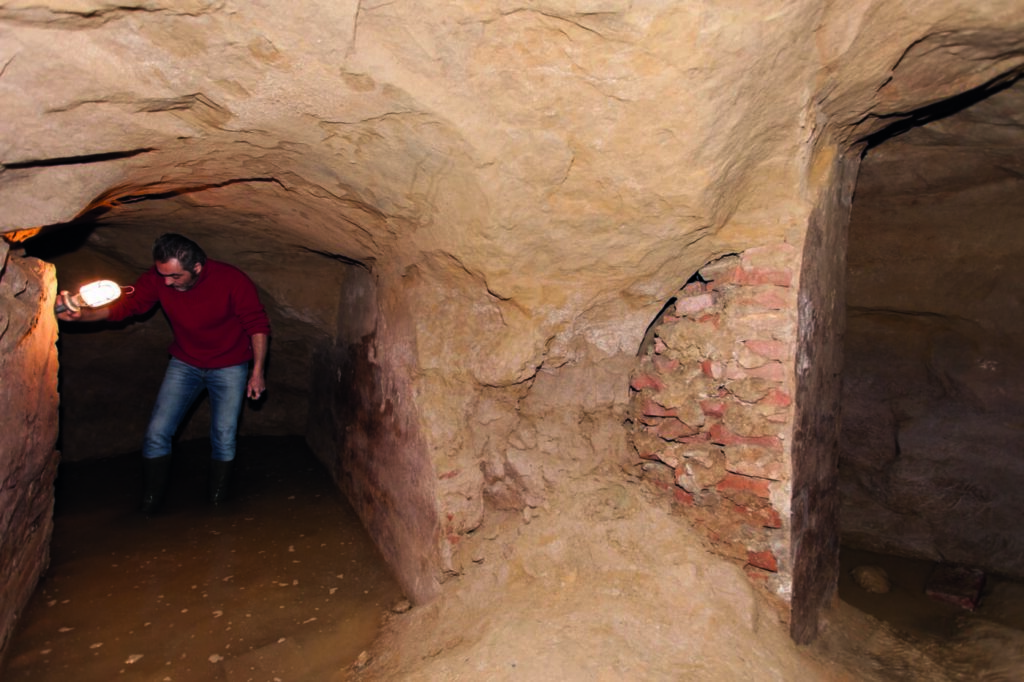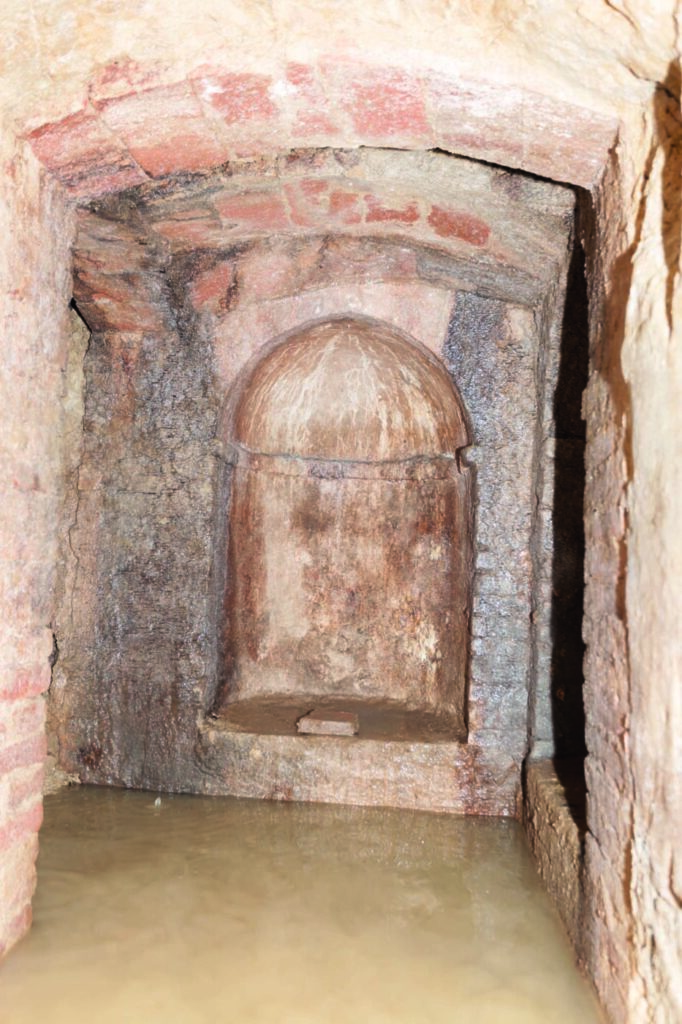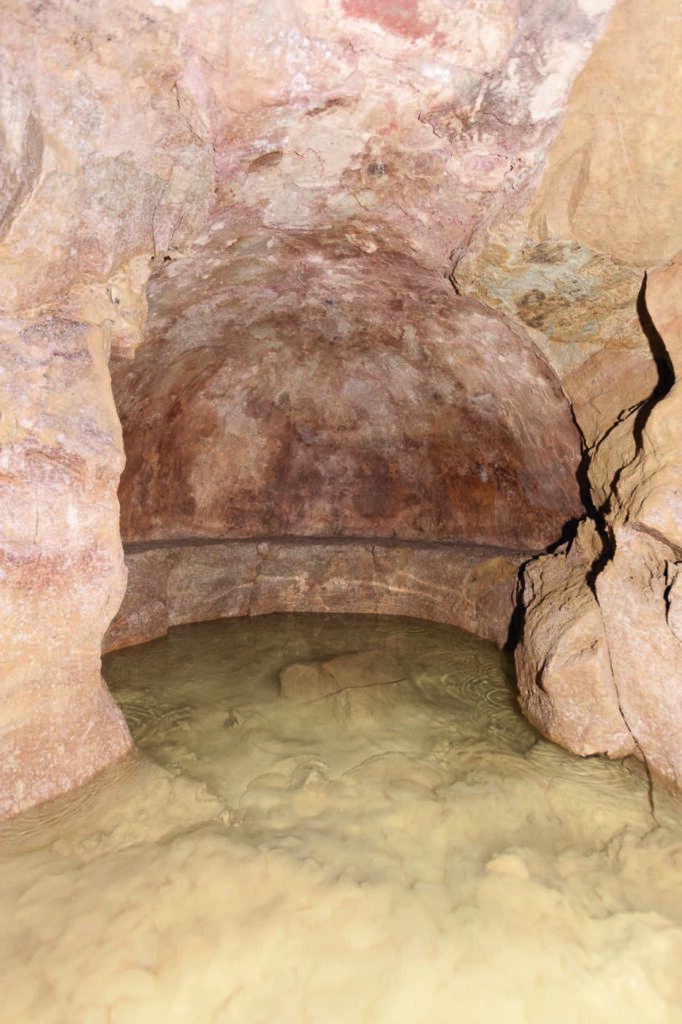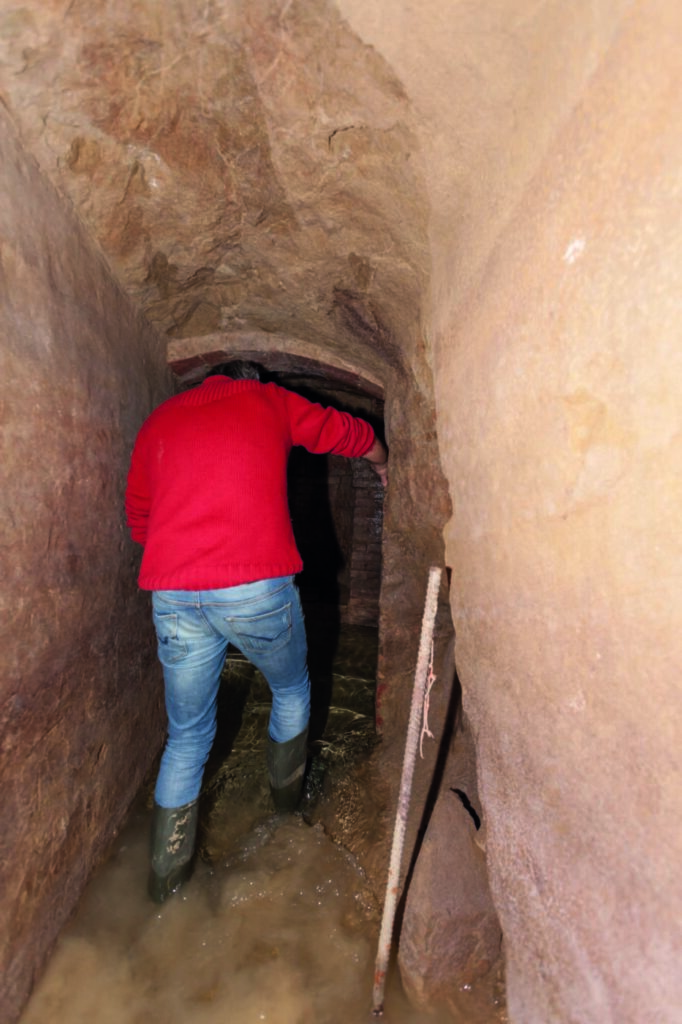Città di Castello
Castrum Felicitatis
The city of Happiness
Castrum Felicitatis - The city of Happiness
Città di Castello, which translates as “town of the castle”, actually has no castle.
If you walk down the side streets looking for a medieval castle, you will be disappointed.
The name Città di Castello is the result of a long transformation linked to the historical periods that the town lived through.
The first urban conglomerate of which we have evidence was Tifernum Tiberium, a roman port on the Tiber River.
This is why the inhabitants of Città di Castello are still called Tifernati.
Some archaeological remains of the roman port have recently been found and are now visible in the southern part of the historic centre in the Mattonata district.
When the Lombards invaded Tiferno in the 6th-century CE, its name became Castrum Felicitatis, which means “Castle of Happiness”.
During the Middle Ages, when the town became independent and achieved the status and power of a Comune (township), the name Castrum (“camp” in Latin) became Civitas and, then, Civitas Castelli, from which the name Città di Castello is derived.
Welcome to
Città di Castello
Upon exiting the car park, you will come face to face with the old town walls dating back to 1200 CE, which had been rebuilt and restored many times.
Inside these walls are two escalators offering easy access to the town and bringing you up to the Giardini del Cassero (Gardens of the Keep), a small park where young lovers meet.
Cross the gardens and you will find the medieval square of the town, Piazza Gabriotti, called Piazza de’ Sotto (Lower Square) by the local inhabitants.
The square hosts an outdoor market on Thursday and Saturday mornings and is lined with the town’s most impressive monuments:
– The Cathedral, Cathedral Museum and Town Hall, the latter was built between 1322 and 1338. It was designed by Angelo da Orvieto, a famous architect who also designed the Palazzo dei Consoli in Gubbio.
– The Civic Tower, which is also known as the Bishop’s Tower because it is located near the bishop’s residence. It was built in 1300 CE and was a prison for a long time.
– The Round Bell Tower, which you can get to it by descending the steep lane on the right side of the Town Hall (Via della Legna and Via del Modello).
The tourist itinerary continues along Corso Cavour, which boasts a small, splendid 14th-century loggia (recessed balcony) and the Palazzo del Podestà (People’s Palace) designed by Angelo da Orvieto in the early 1300s.
Opposite the Palazzo is the Grifani Donati print shop, now a museum that houses working presses from the 1700s. Its owner, Gianni Ottaviani, will be your guide. At the end of Corso Cavour is Piazza Matteotti, a large square called Piazza de Sopra (Upper Square) by the inhabitants and the heart of the town.
It is the perfect place to have an espresso in one of its many bars. On the square stands the Palazzo Bufalini with its splendid loggiato (internal portico).
From this point on, the town takes on a Tuscan appearance created in the 1400s by the Vitelli family, a powerful seigniory who made the town similar to Florence and gave it the renaissance appearance that it still maintains today.
Walking around
Città di Castello
The buildings in Corso Vittorio Emanuele and the districts of the historic centre are based on 16th-century architectural canons.
This is another reason why Città di Castello resembles a Tuscan town rather than an Umbrian one, which is usually a medieval village located atop a hill.
Corso Vittorio Emanuele is lined with trendy shops that, once you enter, are actually housed in surprisingly, marvellous ancient cloisters.
At the end of Corso Vittorio Emanuele are the imposing St. Mary’s Gate and the church of the same name to its right.
This mid 14th-century gate is the most well-preserved of the four gates that give access to the historic centre.
The church was built by the Vitelli family in the late 1400s and is a wonderful example of the Italian gothic style.
Walk along the side of the church in Via Borgo Farinario and you will reach an area of major archaeological interest that, unfortunately, is now abandoned and zoned for urban development.
In front of this area is the most famous and picturesque of the five buildings constructed by the Vitelli family.
It is called the Palazzo Vitelli alla Cannoniera and houses the Civic Picture Gallery, which is the second largest museum in Umbria after the National Gallery in Perugia.
On the right side of the Palazzo Vitelli is the neo-gothic Church of St. Dominic, which was not completed until 1424. In it once hung the famous “Mond Crucifixion” by Raphael, now in London’s National Gallery, and the “Martyrdom of St. Sebastian” by Luca Signorelli, which fortunately is still conserved in the Civic Picture Gallery.
Raffaello
and Alberto Burri
Go back to Piazza Matteotti and head north until you get to Piazza Raffaello Sanzio, named for the painter Raphael, and the Church of St. Francis.
Inside it, above a side altar, you will find a copy of the famous “Marriage of the Virgin” by Raphael that originally hung there.
The painting was plundered by Napoleon and is now in the famous Brera Picture Gallery in Milan.
Walk down Via XI Settembre and you will come to the small Church of St. Mary of the Graces.
It was originally built in the 1300s; however, repeated restorations have significantly altered its appearance.
Inside it hangs a beautiful painting depicting “St. Mary of the Graces” painted in the late 1400s by Giovanni di Piamonte, a follower of Piero della Francesca.
Take Via XI Settembre back to Piazza Raffaello and exit the square into Via degli Albizzini until you get to the Burri Foundation, a national contemporary art museum.
Its collection along with the one in the Old Tobacco Drying Houses are the legacy that the famous abstract painter and sculptor Alberto Burri left to his native town.
The tourist itinerary ends at the most opulent of the Vitelli buildings, Palazzo Vitelli a Sant’Egidio, a true seigniorial palace. After many restorations, the building is now owned by the Cassa di Risparmio di Città di Castello (Savings Bank of Città di Castello), which has recently reopened it to the public and uses its wonderful rooms for art exhibitions.
THE CATHEDRAL MUSEUM
The Cathedral Museum is housed in the former parsonage adjacent to the Basilica of Saints Florido and Amantius and is made up of twelve rooms on two floors.
Along with its goldsmith and other hand-worked pieces on the first floor, the museum houses the “Treasure of Canoscio”, which is one of the most significant 20th-century findings of Paleochristian art.
It is a collection of 25 objects (dishes, chalices and spoons) used for the Christian Eucharistic celebration that all date back to the 6th-century CE.
In the second room on the first floor, there is a gold and silver antependium from 1146 and a 14th-century gold crosier attributed to Goro di Gregorio, a goldsmith from Siena.
The museum also has many paintings including a “Christ in Glory” by Rosso Fiorentino (1528) and a “Madonna and Child with St. John” by Pinturicchio (1486), which hang in a splendid gothic room on the second floor.
ROUND BELL TOWER
The Round Bell Tower is certainly one of the symbols of Città di Castello and creates the town skyline along with the Cathedral Dome and the Civic Tower.
It is located behind Piazza Gabriotti and can be reached from Via della Legna and Via del Modello.
The fact that the tower is round makes it quite unique.
In Italy, there are only two other round bell towers of similar height, one in Ravenna (in Romagna) and one in Caorle (in Veneto).
The lower part of the bell tower was built with small sandstone quoins and dates back to the 11th and 12th centuries.
The double order of windows in the upper portion belongs to a later period and dates back to circa 1283.
The tower is 43.5 metres high and has an average diameter of 7 metres.
The brickwork is one metre thick.
The cone-shaped top of the tower houses the bell room and three bells that are still in working condition.
The tower has recently been reopened to the public and can be accessed through a small door on the right of its base.
If the bell tower is closed, please inquire at the Cathedral Museum.
The acropolis of
Città di Castello
In the end it’s always her. City of Castello. From whatever point of view you observe it, her image is recognizable to anyone and from every point of our beautiful valley.
With our eyes closed we would be able to redraw its profile, marked by the precise rhythm of the position of the civic tower, the round bell tower, the cathedral and the town hall.
And in fact the “Castle City” hides an acropolis from which the main elements of its strongest territorial characterization emerge.
Città di Castello
The round bell tower (11th-12th century), the Cathedral (11th-16th century), the Civic Tower (13th century), the Town Hall (14th century) are some of the buildings that crown it.
And it was probably the real reason for the settlement of the city in this precise point of the Tiber valley: a slight rise near a ford on the river, but at an altitude sheltered from its furies and at the same time not too distant from other alternative water sources such as the two Scatorbia basins, the natural one and the secret one, that is, separate.
Around it, what remained of the city seems to have been rearranged in the form of a fortress in the aftermath of the destruction carried out by the barbarians during the 7th century and the historian from Tiferno Ascani tries to reconstruct it by describing an urban nucleus with a main square, two decumani, via inferior and via superior and four gates in the city walls, respectively Porta del Vingone to the north, Porta del Ceretolo to the east and the two to the south called Garliano and San Basilio, the latter being the entrance to the cardo.
In the highest part of the acropolis he placed what remains of the Roman temple linked to the figure of Pliny the young.
Some maintain that the temple was dedicated to Happiness or Goddess Felicita, an intensely human divinity, also due to the name of Castrum Felicitatis that the city had for a certain period of time, and that its location partially coincided with the current one Cathedral.
In fact, it should be noted that this portion of the acropolis is clearly visible from the area of Villa Plinio where the residence of the famous Roman was located.
But a further suggestion of the Tiber settlement appears if you observe them from the slopes of Massa Trabaria from which you can see it in the center of the valley dominated by the perfect pyramidal geometry of Monte Acuto.
Somehow we perceive the meaning of this location in the correlation with the Umbrian populations straddling both sides of the Apennines, and the translation of the Latin dictionary of Fanum Fortunae comes to mind, making us smile at today’s bathing habits: city maritime of Umbria.
“[…] near my property there is a city, called Tiferno Tiberino, which has elected me as its patron almost since I was a child. It celebrates my arrivals with much more affection than calculation, regrets my departures and congratulates me on my successes. Here I, to return the favors, since in love it is unworthy to be surpassed, I have built with my own finances the temple whose consecration, having been completed, it would be impious to postpone any longer. I will therefore be there on the day of the dedication which I have decided to celebrate with a banquet.”
Pliny the Younger, to his friend Fabato
In particular, it is the distant image of the group of the bell tower with the Cathedral and the towers that we have seen from the point of view of Colle Plinio in Celalba and which inspires us: from there we perceive, in the middle of the valley, a small hill on which the monumental group stands out and it is clear what privileged place Pliny himself chose to build his Temple of Happiness.
The history of our acropolis began from the identification of that place which soon, with San Florido, was transformed into the monumental complex of the Cathedral whose history ran parallel to the historical events of Città di Castello.
Città di Castello Underground
Città di Castello, journey underground. Space excavated, built and buried
Underground tunnel of Piazza dell'Incontro
From the underground rooms of number 1, characterized by cross vaults and round arches, and once the atelier of the well-known painter from Tiferno Albi Bachini, the underground path is accessed thanks to a small opening in the sturdy masonry. A steep staircase leads up to the first level, from which you then gradually descend by walking up to six and a half meters below the level of the square.
Mysterious Città di Castello
The route ends in a small circular room like a dome carved into the rock. Here clear groundwater flows which floods the tunnel during the rainiest periods of the year.
The geometric configuration of the underground path, together with the delicate sound of the water that pervades the entire environment with humidity, takes us back to a distant era, to a timeless world. The ownership of the underground rooms belongs to the Chieli – Capacci family.
